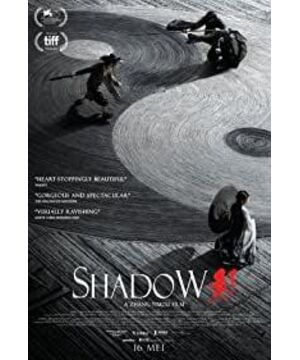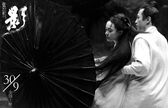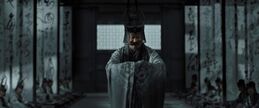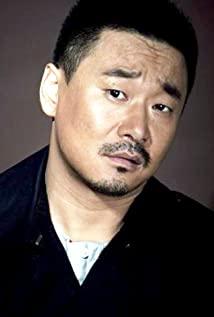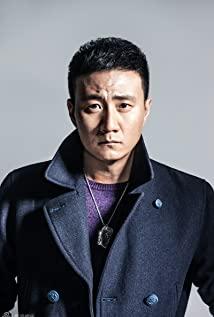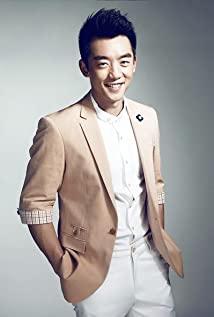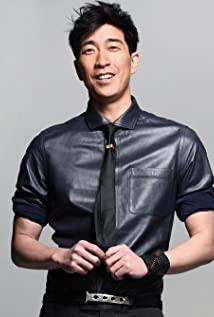On Zhang Yimou's "Shadow" again: a copy painting of Akira Kurosawa
He Yunchao
Zhang Yimou's every shot is full of topics. 30 years ago, "Red Sorghum" became famous at the Berlin Film Festival with its rich red and yellow warm colors; 30 years later, "Shadow", which featured cool colors in black and white, still allows audiences all over the world to see his technical heritage and continues to stand up to the formalism. criticized, but every time he was not discouraged.
"Shadow" may be closer to art than any previous film by Zhang Yimou. Zhang Yimou, who is in his seventies, from "Return" to "Shadow", more and more let the audience see himself clearly in the film, full of Zhang Yimou-style breakthrough and struggle, like the subtle connection between "Shadow" and Zhang Yimou's inner world - Be someone else or be yourself. Just like "Alive" and "Big Red Lantern", which were well-received back then, no matter how good they are, they are the stories of other people in their bones.
When "Shadow" was unveiled at the Venice Film Festival, most foreign media film critics thought it was like a Shakespeare play in the style of an ink painting, based on the story of the Three Kingdoms, but also in history. It not only deduces a tragic sacrifice in the style of "King Lear", but also has the gloomy machinations in the style of "Macbeth". Foreign film critics have sharp eyes, no prejudice against cultural background, and some polite praise. They can see Zhang Yimou's packaging skills for "Shadow" at once. Because Zhang Yimou does not have a Shakespeare complex in general, the audience knows that Zhang Yimou cleverly used the creativity of Akira Kurosawa's "Shakespeare" and borrowed the setting of "substitute" into Chinese history. Moreover, Zhang Yimou personally participated in the revision and creation of the script, which is an abnormal move. For many years, although Zhang Yimou has always grasped the film in all aspects (it is also a subtle psychological change that completely gave up his entry into Hollywood after "The Great Wall"), he has always been clear that the screenwriter is weak. In my impression, "Shadow" is almost the first film. The famous work of screenwriter Zhang Yimou was published in a grand manner, which shows that he is full of confidence or ambition in public this time.
The story, formerly known as "Three Kingdoms: Jingzhou", comes from Zhu Sujin, chief screenwriter of the new version of "Three Kingdoms" in 2010. It is said that Zhang Yimou was based on the story of the Three Kingdoms in the early stage, and the protagonist was the governor Zhou Yu. Sun Quan, the master of Wu, both respected and feared Zhou Yu, who defeated Cao Dagong at Chibi. Zhou Yu's lofty prestige in the army made the young Sun Quan feel a great threat. Because Zhou Yu was not in good health, he was adventurous in the military, and was injured by arrows. The cause of death was unknown. Zhu Sujin's script is said to describe the story of Zhou Yu's use of a double.
Zhang Yimou's adaptation amplifies the creativity of Akira Kurosawa. As we all know, Akira Kurosawa is a master of adapting famous works compatible with Eastern and Western cultures. With the accumulation of oriental culture, literature and art love Greek tragedy, Shakespeare, Russian literature and Western theory. The film technique is very westernized, and the elegant and restrained Japanese tradition is not prominent. For example, "Rashomon" has been questioned before and after it went to Venice for the awards. Many critics believe that this is not a movie with Japanese characteristics (it was Japan shortly after World War II).
Zhang Yimou's blockbuster color aesthetics and photography techniques were actually borrowed from Akira Kurosawa's color films. Needless to say, most people know Akira Kurosawa's painting hobby since childhood. The backlit photography method used against the sun in "Red Sorghum" came from "Rashomon", which risked burning the film back then. In the end, the running of the sorghum field also borrowed from the classic moving scene of the woodcutter entering the forest in front of "Rashomon".
Today's "Shadow" once again allowed Zhang Yimou to see a medium for releasing his personal interest, and became a Chinese experiment that integrated "Shadow Warrior", "Spider Nest City" and "Ran". Therefore, the Shakespeare tone of foreign film critics should be Zhang Yimou's reference and tribute to Kurosawa's films. But the important difference this time is that, in order to express this story full of "Kurozawa Akira" flavor, Zhang Yimou benefited a lot from the color aesthetics, but "Shadow" has done a lot of restraint. Moreover, it has changed the routine of commercial films in the past. It is no longer a simple color. This time, Zhang Yimou expresses the aesthetics of formalism to the stage and extreme. Instead, it shows the so-called artistic tendency inside and outside, which is full of visual stimulation.
The black and white elements in the film are extravagant in clothing and calligraphy (although cursive script appeared in the Three Kingdoms period, it is said to be a variant of official script, it is difficult to define whether it is the appearance of "Taiping Fu" written by Zheng Kai in the film), the concept of yin and yang Taiji is in Men and women, weapons, architecture, weather, geography, etc. are presented. In particular, there is a martial arts field with Tai Chi pictures, all of which tell the audience bluntly: Look, this is our traditional Chinese culture!
In other words, the visual expression of "Shadow" is still full of the missionary temperament of Zhang Yimou's very well-versed "cultural ambassador". When the audience sees black and white, advance and retreat, men and women, water and stone, literature and martial arts, yin and masculinity, Ziyu and Jingzhou on the screen, almost every scene is very labelled, although All kinds of extreme formalistic aesthetics can become the value of visual appreciation, but how much of this type of lens language really has a narrative function? And did it all work?
For example, the fight between Jingzhou, Ziyu and Xiaoai on the Taiji map - this is a highlight for the needs of the plot. Several characters discussed the principle of Chinese martial arts between "blade and umbrella": what is the most powerful weapon in the broadsword, but the umbrella does not have a sharp edge, and what is the combination of femininity and rain to restrain masculinity. After the actual set of actions, the audience saw a very performative "Dancing China" program. Extending to the climax, Wang Qianyuan, Guan Xiaotong and a group of dead men performed a collective umbrella dance in front of the defenders of Jingzhou City. In the situation of a decisive battle of life and death, this scene was unexpectedly full of joy, sacrificing the tension of the plot. Just to express a kind of innocuous concept of "femininity overcomes rigidity".
Having said that, this is completely in line with Zhang Yimou's personal taste. Because "Shadow" erased the background of the Three Kingdoms, it was originally to adapt to the various ideas and themes of his idol Kurosawa Akira's very mature and classic "Shadow Warrior", "Spider Nest City" and "Ran" - at least stand-ins, women, The elements of power and desire are seamlessly connected. To this end, he wants to avoid the original grand narrative, and the simple plot can better describe the reflection of human nature-cutting off redundant branches to facilitate the carving of the trunk. Therefore, the success and failure of "Shadow" are clear and pure. Zhang Yimou is still an excellent photographer, artist, and a master of formalist aesthetics, but he is still not a good screenwriter. The influence of master Kurosawa Akira on him is only an appearance at the technical level. .
Akira Kurosawa's adaptation is by no means a copy of Shakespeare's play. He mastered the essence of the plot and themes, and at the same time was able to deeply integrate Japanese history and society. Only "Spider's Nest" and "Ran" are regarded as successful adaptations. In the original "Shadow Warrior" of "Shadow", the intention of the Takeda family to use the stand-in has the meaning of "face project" to maintain the smooth and transition of power, but in fact, the Takeda family is eager to preserve the spirit of the samurai. And his Fenglin volcano is the creed of the old-time military warriors, and eventually the civilians such as stand-ins are also affected, but it cannot change the reality of the decline and fall of the Takeda family and the samurai. This is the tragedy of the integration of individuals, families and times. The hostile Oda Nobunaga and others are the characters that symbolize the new era. He uses firearms a lot, loves wine, and treats Portuguese missionaries favorably. In the film, Oda Nobunaga invites Tokugawa Ieyasu to drink wine, so he subtly portrays these two characters. The personality of accepting external things is also different. Akira Kurosawa has always positioned humanity and destiny at the height of history and social changes, and using some form labels has specific effects. For example, the Takeda family brought a stand-in to learn about Shingen's daily life scene. They paid great attention to details and props, but they all had narrative functions. From sleeping habits to Buddhist beliefs, they were able to interpret the characters. The play about Shingen was more "quiet". Corresponding to Oda Nobunaga, his personality and hobbies are completely different from his style. His plays are very "moving", and they can be reflected in the details of the pictures. If the story of the era and social background is stripped, it is more pleasant to say that it is full of theatrical stages. In fact, it is just an empty shell without a flesh and blood soul, which is exactly what "Shadow" is.
Zhang Yimou used Akira Kurosawa's ready-made "creativity" to replace his own, and his "creation" was to erase the original Zhu Sujin's originality. Although the core of "Shadow" has a certain depth of human nature and thought, this is Zhang Yimou's interpretation of the so-called conspiracy of Chinese history, which expresses the dark side of human nature's black and white confusion and entanglement. Everyone is a conspirator, which is a disease of the times. It can be said that it has existed since ancient times, but there is nothing new for Zhang Yimou's works over the past 30 years. From "Judou", "Big Red Lantern", "Shake and Shake", "Hero" and "Golden Armor", Zhang Yimou's theme keywords cannot escape these three axe, the background of his growth and the understanding of human nature belong to him. The source of creation can also be understood why Zhang Yimou loved formal aesthetics in his life (just like Akira Kurosawa's strong "samurai" complex), and I always believed that it was indeed the times that created Zhang Yimou, both from a special era in the past, but also in line with Today's new era.
I remember that the first characteristic of the fifth generation in film history is expressionism. Zhang Yimou has become an inescapable symbol by virtue of color expression and the pioneering temperament of new era literature to reflect on cultural roots. This ironic reality is just like that year when Zhang Yimou used Mo Yan's "Red Sorghum" to defeat Chen Kaige's "King of Children" with Acheng, and the conclusion is that "formalism triumphs over ideological content". Because formalism is always an effective shortcut to exaggerate the atmosphere of the times, it has further evolved into Zhang Yimou who understands "Chinese culture" best - because we live under the rules and regulations of various formalisms at any time, right?
View more about Shadow reviews


